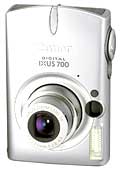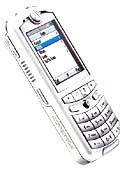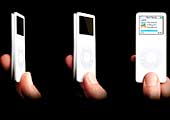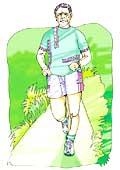|
In
your 30s, if you're the non-exercising type, you lose 225 grams
of muscle mass a year. By the time you're into your 40s, that
can zoom to a terrifying 1 kg. Worse still, men in their 40s also
shrink as the fluid in the spinal disks dries out. It is estimated
that between 40 and 60, most men get shorter by nearly an inch
and a half! There are other problems for the 40-plus. The body
tends to put on fat more easily-primarily because metabolism rates
slow down-and is more prone to injury.
But there are things you can do to counter
all this. Begin by focussing on your posture. While sitting, standing
or walking, keep your shoulders and back straight, spine in its
natural arch and head up. Good posture avoids exerting pressure
on your vertebrae and, as a bonus, helps you look good too.
To boost your metabolism, incorporate a workout
schedule into your daily routine. It may begin with a simple brisk
45-minute walk or a 30-minute session on an exercise bike. Then
gradually add a weight resistance or weightlifting programme to
your schedule. Lifting weights not only strengthens the muscles
(remember you lose muscle mass after you turn 30 if your life
is predominantly sedentary) but it also boosts your metabolism
rate. The latter helps in burning body fat. In fact, although
cardiovascular exercise burns body fat, weight training is considered
by many experts to be better at it because even after a moderately
intensive resistance training session, the body continues to burn
fat for 24 hours or more.
To avoid injury while exercising, stretch
your muscles and warm them up first. Seven to 10 minutes of moderate
intensity cardio can do the trick: it increases the flow of synovial
fluid (the lubrication in your joints) and also increases the
body temperature, which in turns makes muscles more elastic and,
hence, less prone to injury. Also, while weight training at 40-plus,
keep your technique simple, your movements slow and not jerky
(for haste could result in bad form, which in turn can cause injuries)
but your weights heavy. Lifting heavy can help you gain muscle
mass faster. Here's a quick fact: if you gain 2.2 gm of muscle
mass you can burn 50 additional calories every day. If you want
motivation, remember that fact.
Eat five or six small meals rather than three
big ones. Five or six meals will keep your metabolism ticking
and, along with regular exercises, may also help in keeping diabetes
in check. Also, research shows that eating several small meals
can help keep your good cholesterol (HDL) levels high and bad
cholesterol (LDL) levels low.
Besides exercise-both cardio and weight training
and diet, there's another factor that can keep you in fine fettle
after 40: peace of mind. A fact often overlooked is how much of
work-related stress can cause health problems (think strokes,
high blood pressure and heart ailments). So keep the mind at peace
while you look after your body and enjoy your grey period!
-Muscles
Mani
write to musclesmani@intoday.com
Caveat: The physical exercises described
in Treadmill are not recommendations. Readers should exercise
caution and consult a physician before attempting to follow any
of these.
THAT
SLIPPING DISC
Feeling persistent
pain in the back or legs? It could be just a, well, pain, or it
could be a slipped disc, which is much more serious. Says Dr Yash
Gulati, Senior Consultant (Spine Surgery), Indraprastha Apollo
Hospital, New Delhi: "One per cent of the population will
suffer from slipped discs at some point in their lives."
That's quite a lot, so it helps to know more about it. Here's
a quick primer:
What it is: A disc acts as padding between
two bones of the vertebral column and consists of an outer circle
of connective tissue (annulus), and an inner jelly-like core (nucleus).
The spinal canal (which contains the spinal cord) runs through
the centre of this column of vertebrae and discs. If for some
reason the annulus weakens or ruptures, the nucleus pushes out
towards the spinal cord. In that sense, "slipped disc"
is actually a misnomer since the entire disc doesn't really slip
out of position.
Causes: The primary cause is degeneration
of the outer connective tissue, which happens with age, with people
between 30-50 years of age being most susceptible. Says Dr Ajay
Bhutani, spine surgeon at New Delhi's Sir Ganga Ram Hospital:
"Slipped discs can be aggravated by bad posture, sitting
for long hours at one place, being overweight, etc."
Symptoms: These can range from the mild (pain
in the legs or back) to the harsh (paralysis of the legs, loss
of control over urination). According to Bhutani, these symptoms
could also indicate TB or a tumour, so an MRI scan needs to be
done.
Treatment: "Nine out of 10 patients
settle down after mild treatment such as physiotherapy, painkillers,
etc.," says Gulati. "The rest require surgery."
Microsurgery, which costs Rs 60,000-70,000, is an option. The
best way, however, is to minimise the chances of having a slipped
disc through regular exercise, better ergonomics and a healthy
diet. And yes, watch your weight.
-Alokesh Bhattacharyya
PRINTED
CIRCUIT
 Pixel
Hog Pixel
Hog
Canon Ixus 700
If
all that you've ever dreamed of is to lay your hands on a digital
camera that gives you stunning resolution in print, then the Canon
IXUS 700 is for you. At Rs 29,995 (plus local taxes) and with
a 3x optical zoom, the camera is a steal. But here's the flipside:
the higher the pixels, the more they hog memory space. The 64-mb
card that Canon offers with the IXUS 700 can store only 150 photos
at full resolution, which means you may have to invest another
Rs 2,000 in, say, a 1-gb card. So, amateur shutterbugs had better
think twice before buying the IXUS 700.
 Moto
Makes Music Moto
Makes Music
Motorola rokr
Despite the
cynicism, mobile phone mp3 players are taking on a life of their
own. Now, Motorola has launched the world's first cellphone-cum-mp3
player with iTunes, allowing the user to download up to a hundred
songs from Apple's virtual music store. Unfortunately for us,
Motorola says it has no plans of launching it in India, at least
this year. Partly because it doesn't see a big market for mp3-player
handsets in the country, and partly because in India you can't
buy music on iTunes. Still, if you are thinking of picking up
one on your next trip to the us, don't. The rokr that sells in
the us may not be configured for India. Seems like you'll just
have to wait for an official launch.
 Slicker
And Smaller Slicker
And Smaller
iPod Nano
Call it the
kate moss of digital personal Music Players (yes, PMP is the technical
term). It is just 8.9 cm tall, 4 cm wide and 0.68 cm thick, which
is as thick as a regular pencil. No wonder Apple decided to call
it the iPod Nano (from Latin-derived Greek word nanos, which means
a dwarf). It is available in the us (the India launch, it seems,
will happen end-October) in two versions: 2 GB, which allows you
to store up to 500 songs, and 4 GB (you do the math). The former
costs $199 (Rs 8,756) and the latter $249 (Rs 10,956), but both
are equally thin.
 Browser
Battles Browser
Battles
Firefox Start
After missing
dates twice, the Mozilla Foundation launched a beta version of
its updated open source browser, Firefox, last fortnight. Compared
to Firefox 1.0, which was launched eight months ago to challenge
Microsoft's dominance of the browser market, the 1.5 Beta version
offers nifty new features such as drag-and-drop reordering of
browser tabs, better security and pop-up blockers. Microsoft's
Internet Explorer doesn't have some of the Firefox features (like
allowing users to open up many 'tabs' inside the browser window),
but its newly released IE 7.0 incorporates a lot of those. What
should you pick: IE or Firefox? Give the free-to-use Firefox a
shot, it is a good browser, but don't ditch IE just yet. Download
free software from www.mozilla.org
-compiled by Kushan Mitra
|





 Pixel
Hog
Pixel
Hog Moto
Makes Music
Moto
Makes Music
 Browser
Battles
Browser
Battles